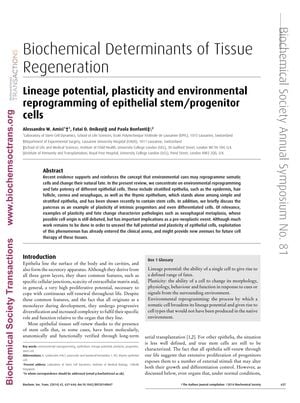TLDR Environmental cues can change the fate and function of epithelial cells, with potential for cell therapy.
The document reviewed the ability of environmental cues to reprogram epithelial cells and alter their natural fate, with a focus on the plasticity and lineage potential of epithelial cells from various tissues such as the epidermis, hair follicle, cornea, oesophagus, thymus, and pancreas. It highlighted examples of epithelial cells responding to environmental signals to differentiate into complex structures like hair follicles and discussed the reprogramming of cells from one type of epithelium to another, with potential clinical applications in cell therapy. The review also detailed the plasticity of thymic epithelial cells (TECs), which can contribute to thymic morphogenesis in vivo and form functional structures, and when introduced into mouse skin, can contribute to the formation of epidermis and hair follicles, showing a stable change in their transcriptional profile indicative of environmental reprogramming to multipotent stem cells. The document suggested that a deeper understanding of the signals and mechanisms behind such plasticity could lead to therapeutic applications where damaged or lost epithelium could be replaced.
135 citations
,
October 2010 in “Stem Cells” Hair follicle stem cells can help treat eye surface issues by becoming corneal cells.
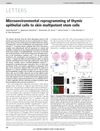 116 citations
,
August 2010 in “Nature”
116 citations
,
August 2010 in “Nature” Scientists turned rat thymus cells into stem cells that can help repair skin and hair.
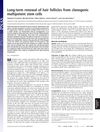 291 citations
,
October 2005 in “Proceedings of the National Academy of Sciences of the United States of America”
291 citations
,
October 2005 in “Proceedings of the National Academy of Sciences of the United States of America” Adult stem cells from rat whisker follicles can regenerate hair follicles and sebaceous glands.
854 citations
,
February 2002 in “The journal of investigative dermatology/Journal of investigative dermatology” Understanding hair follicle development can help treat hair loss, skin regeneration, and certain skin cancers.
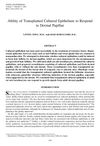 11 citations
,
October 2001 in “Tissue engineering”
11 citations
,
October 2001 in “Tissue engineering” Cultured epithelium can form hair follicles when combined with dermal papillae.
949 citations
,
January 2001 in “Cell” Adult mouse skin contains stem cells that can create new hair, skin, and oil glands.
1010 citations
,
August 2000 in “Cell” Hair follicle stem cells can form both hair follicles and skin.
248 citations
,
April 1988 in “Differentiation” Human and bovine hair follicles have distinct cytokeratins specific to hair-forming cells.
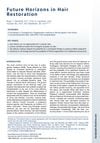 11 citations
,
August 2013 in “Facial Plastic Surgery Clinics of North America”
11 citations
,
August 2013 in “Facial Plastic Surgery Clinics of North America” New cell-based therapies may improve hair loss treatments in the future.
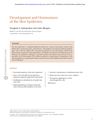 85 citations
,
July 2012 in “Cold Spring Harbor perspectives in biology”
85 citations
,
July 2012 in “Cold Spring Harbor perspectives in biology” The skin protects the body and is constantly renewed by stem cells; disruptions can lead to cancer.
September 2025 in “Biomolecules” The skin microenvironment significantly affects hair growth and loss, offering potential treatment avenues.
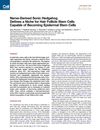 396 citations
,
May 2011 in “Cell stem cell”
396 citations
,
May 2011 in “Cell stem cell” Nerve signals are crucial for hair follicle stem cells to become skin stem cells and help in wound healing.
 8 citations
,
November 2020 in “Nature Communications”
8 citations
,
November 2020 in “Nature Communications” Adult stem cells with Tp63 can form hair and skin cells when placed in new skin, showing they have hidden abilities for skin repair.
